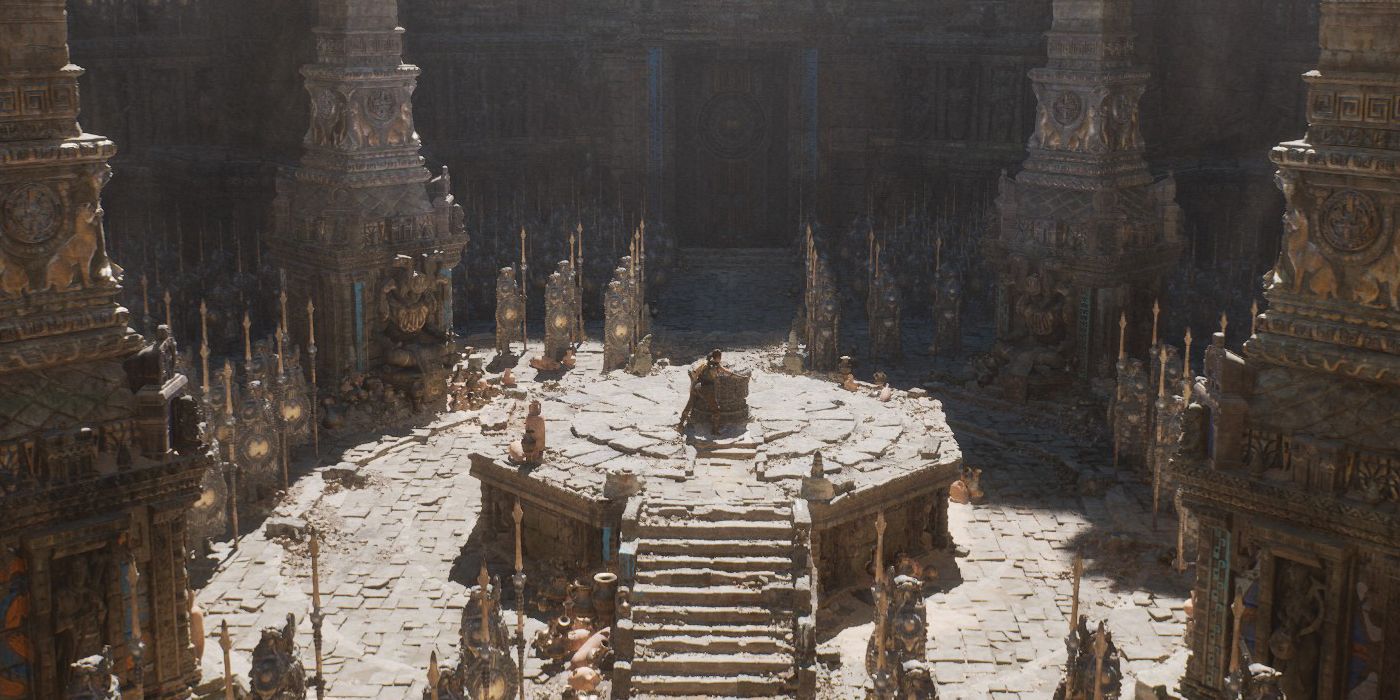Tech enthusiasts have long chased the dream of cinematic photo-realism in video games, and Epic Game's CTO, Kim Liberi, believes that dream is on the cusp of being realized thanks to the PlayStation 5 and Xbox Series X. Leaps in the next-generation consoles' processing power, paired with graphical advancements in game engines such Unreal 5 will enable, real-time movie-like experiences in-game.
In an interview with Official PlayStation Magazine UK, Liberi asserts that the jump to movie-realism is more than a cosmetic issue or a certain graphical benchmark that must be met. Rather, movie-realism will enable entirely new gameplay concepts that leverage dynamic lighting and true-to-life physics to make games more immersive than ever before. The first glimpse of what these games might look like comes from Epic's PS5 tech demo, Lumen in the Land of the Nanite, unveiled at Summer Game Fest.
The demo should be taken with a grain of salt, however. Epic Games was accused of hiding loading times during the demo, and it also confirmed that the Unreal demo runs at only 30 frames per second, as opposed to the current industry-standard of 60FPS. It would also hardly be surprising if the first wave of next-gen titles fail to live up to the ambitious standards set by a technical demo.
Unreal's graphical demonstrations usually provide audiences with a sense of where the industry is heading, however, and the upcoming consoles' graphical output will inevitably mature over the course of the hardware generation, meaning tomorrow's technology could potentially exceed what is on display in Lumen.
Multiple next-gen titles have set their sights on unparalleled visuals. Horizon Zero Dawn 2 developer Guerrilla Games recently posted job listings for positions that will tackle "industry-benchmark" graphics. The PS5 horror title, Martha, also has its sights set on photo-realism. And Senua's Saga: Hellblade 2 will be powered by the same technology that powered Lumen.
While game developers garner for the most impressive graphical showing, striving to achieve the dream of movie-like graphics, it is interesting to consider the converse side of that relationship — how games and gaming technologies have shaped cinema and film-making. Epic's Technical Director of Graphics, Brian Karis, and Special Projects Art Director, Jerome Platteaux said that gamers can look to The Mandalorian as a graphical target for next-gen games. It is interesting to note though, that the first season of The Mandalorian leveraged Unreal tech to render environments and effects in real-time, when the engine was originally developed for building video games.
It takes more than graphics to craft an excellent game, of course, and there is more to crafting pleasing graphics than visual verisimilitude. Even some original Xbox games hold up after nearly two decades thanks to carefully unified aesthetics, and their introduction of graphically-grounded mechanics such as the use of shadow in Splinter Cell and Chronicles of Riddick. These titles serve as a useful reminder to developers: as long as innovation and immersion are the driving forces behind the pursuit of better visuals, the future of gaming will be good-looking indeed.
The PlayStation 5 and Xbox Series X are expected to launch later this year.
Source: Video Games Chronicle


